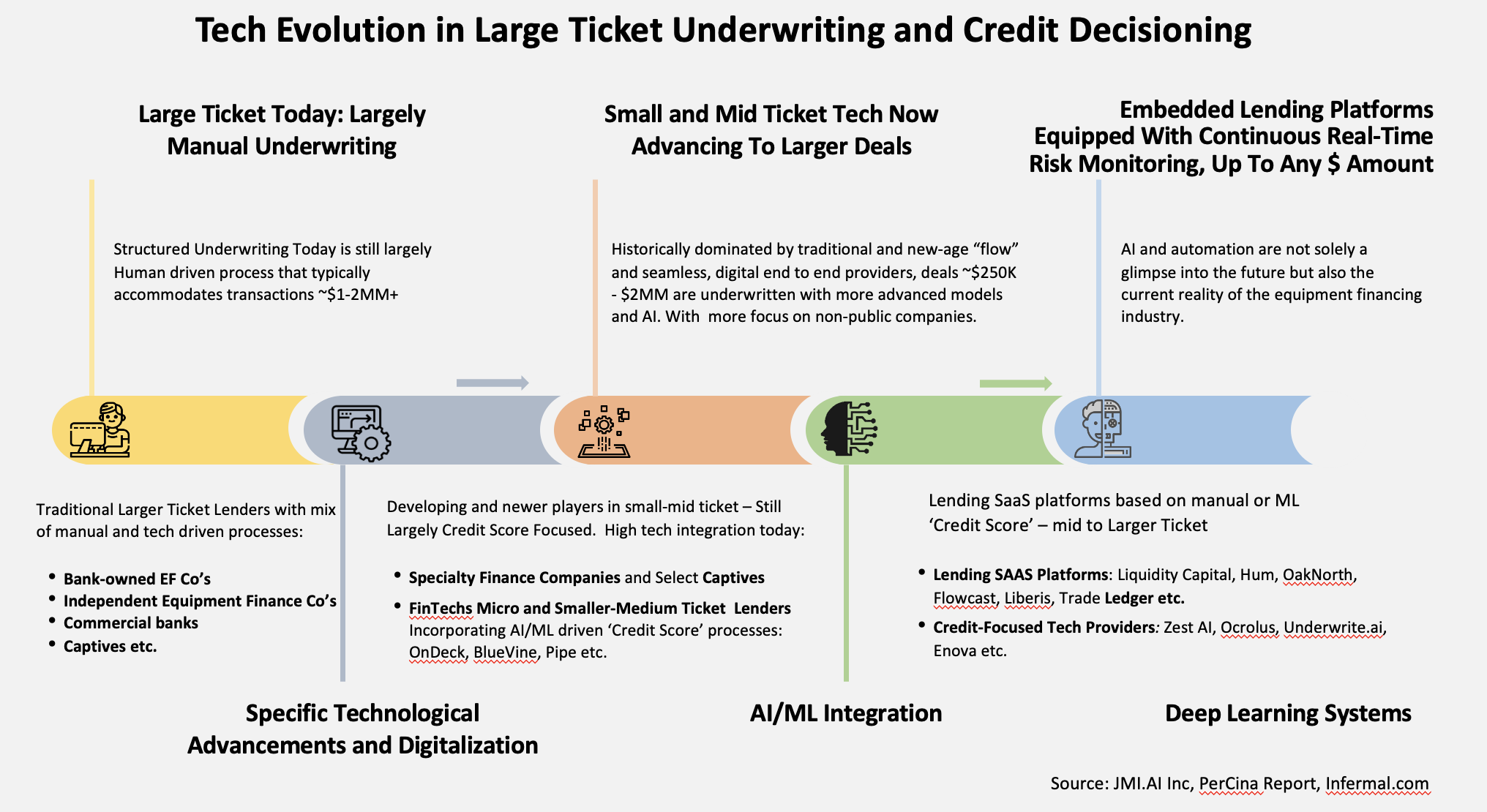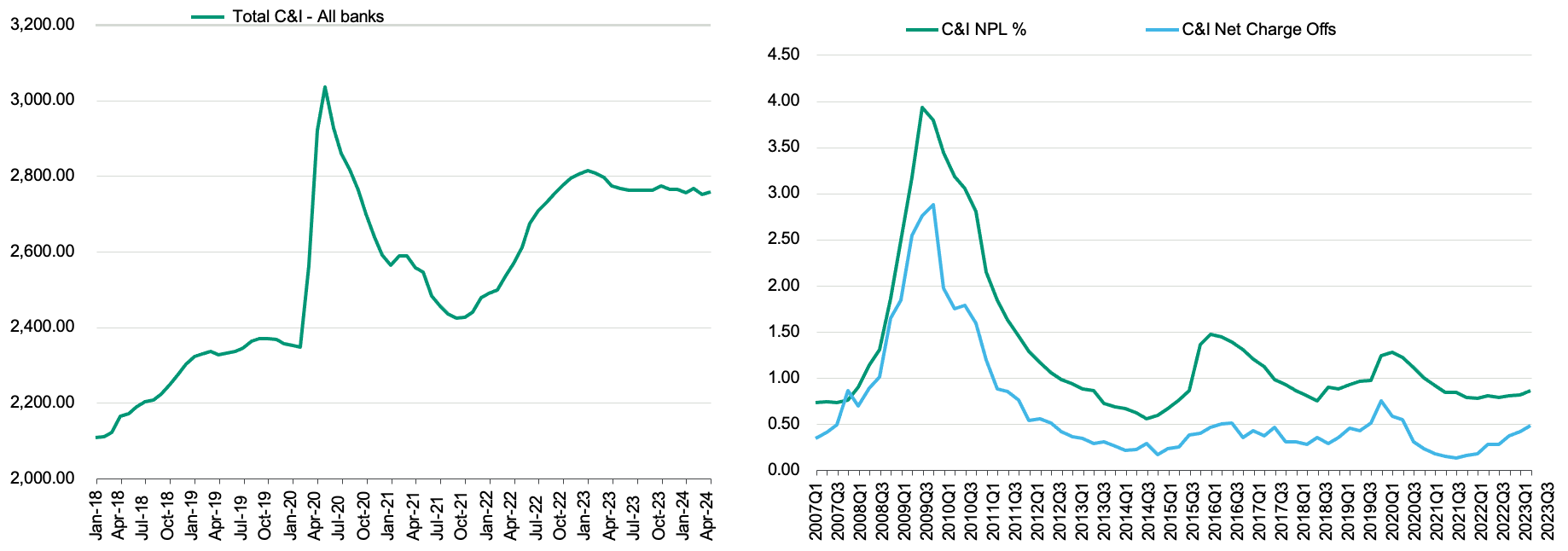Leveraging AI and Technology for Strategic Advantages in Equipment Finance
Deck: AI is transforming equipment finance, enhancing efficiency, accuracy and decision-making in underwriting and risk management, driving industry innovation.
Sunday 6 October 2024

By Andrew Carman, PerCina Report and Lonetown Capital LLC, and Vishal Garg, ScaleCred
As the equipment finance industry continues to expand and evolve, the technologies that support it are advancing at an unprecedented pace. Artificial intelligence (AI) is now at the forefront of this transformation, revolutionizing risk management and credit underwriting processes. This evolution presents remarkable opportunities for lessors and lenders to enhance efficiency, accuracy, and decision-making. In today's fiercely competitive market, the adoption of advanced technology is no longer a luxury, it's a necessity.
The equipment finance industry has always been open to technological innovation, but AI adoption is still in its early stages across most companies. Larger, well-funded organizations such as banks, private equity firms, hedge funds, and select commercial finance companies are leading the way in investing in AI applications. However, everyday lessors are beginning to recognize the potential of these developments and are starting to explore how advanced technology can enhance deal underwriting, decision-making, ongoing portfolio management, and transaction prescreening.
Competing in a Crowded Market
The equipment finance industry is facing an influx of new entrants, intensifying competition for the same deals. In this crowded marketplace, speed and accuracy in credit decision-making are critical. AI can help lessors prescreen potential deals more effectively, identify the right opportunities, and make faster credit decisions. This is not merely a competitive advantage, it's essential for maintaining a strong market presence. AI has the capability to streamline loan applications, enhance customer and broker onboarding, and provide better insights, allowing lessors to focus on their strategic priorities.
Over the last several years, there has been significant activity in the technology space, particularly in the realm of risk management, including small and large ticket underwriting. The evolution of technology applications supporting underwriting has been remarkable. While the equipment finance industry has long embraced technology, the latest wave of solutions – and the rapid pace at which they are coming to market - can be attributed to the increased capacity of systems to manage enormous data sets and the advancement of computer chip technology. For smaller lessors and brokers, understanding where the industry is headed and how to adopt similar approaches to leverage these technologies is crucial. Figure 1 illustrates the evolution of technology in underwriting and credit decision-making, highlighting potential opportunities to leverage AI in Equipment Finance.

Transforming Underwriting Processes
AI is reshaping the equipment finance landscape by enabling lenders to do more with less. Through automation and real-time risk assessments, AI is transforming underwriting processes. AI’s ability to prioritize human capital and respond quickly to emerging risks and opportunities makes it an invaluable tool in today’s financial services and lending market. Table 1 outlines several areas of impact of AI on risk management and credit underwriting.
AI's Impact on Risk Management & Credit Underwriting
-
AI Application
Benefit
Example
Automation
Reduces manual workload
Equipment lease application processing
Enhanced Onboarding
Improves customer experience
Personalized lessee interactions
Data Analysis
Provides deeper insights into credit risk
Predictive analytics for equipment finance
Real-Time Decisioning
Accelerates risk assessments
Instant lease approval based on live data
AI-Driven Risk, Monitoring and Decisioning
In equipment finance, accurately predicting borrower behaviour and assessing credit risk is crucial. AI excels in connecting and analyzing vast amounts of data, uncovering patterns that inform better decision-making. This leads to improved loan performance, reduced defaults, and more resilient operations. AI can now assist in drafting credit memos, answering numerous credit-related questions instantly, and providing real-time portfolio management – all essential elements for busy and under-resourced credit teams managing risk in medium and larger transactions and diverse portfolios. Figure 2 shows trends in equipment finance, including portfolio growth and the challenges associated with rising charge-offs. Across the industry, as portfolios grow, yet credit teams remain budget constrained, the need for more technology and efficiency tool adoption becomes paramount.
Trends in Equipment Finance Driving More Need for AI and Tech Solutions

Sources: Federal Reserve, Moody’s
AI solutions can help mitigate these challenges by offering faster, more accurate risk assessments. With the ability to process more data at a faster rate and in real-time, ongoing portfolio management and covenant monitoring can now be integrated into everyday risk dashboards.
Empowering Equipment Finance Teams
AI empowers credit teams – along with individual contributors and brokers – by automating tedious tasks, allowing them to focus on higher value activities like building strategic customer relationships and freeing-up time to dig a little deeper into a potential deal risk issue. While credit scoring has and will continue to play a vital role in speeding up credit decision-making for small and medium-sized transactions, it is less helpful for larger transactions and certain types of deal prescreening. This is where the latest technology is starting to make a significant impact.
Today, some technologies assist credit teams in distinguishing between low-value tasks (e.g., gathering data, company backgrounds, management bios, general market data, etc.) and more critical tasks like analyzing specific company issues, assessing critical customer contracts, or taking deeper dives into periods of subpar performance for example. This capability can help avoid defaults and ensure the selection of the right companies to finance. The collaboration between humans and AI is beginning to lead to better decision-making, providing more customized solutions and hopefully more customer satisfaction. AI is freeing-up time and resources, enabling credit teams to work more effectively and deliver better results.
While much of this may seem out of reach for smaller lessors and individual brokers, access to these applications is becoming easier. Widely adopted generative AI tools can assist with everyday deal processes. The latest technology solutions on the market already incorporate AI to help with preparing deal prescreens, credit memorandums, financial spreads, and even automated collateral value curves — faster and more efficiently than ever before. Additionally, these solutions can also help individual lease brokers create more thorough and professional deal syndication packages, more efficiently and affordably, than they do today. These advantages can help smaller lease players establish a stronger market presence. Brokers typically don’t have a lot of resources, and they need to act fast to compete. By adopting just a small amount of technology, they can expand not only the number of deals they complete for each year, but also the range and perhaps types of deals they can source and successfully close.
AI is Not Perfect – Mitigating AI Risks in Equipment Finance
While AI offers numerous benefits, it also introduces potential risks such as regulatory challenges, reputational damage, and possible unfair loan or lease denials due to bias. Additionally, AI can sometimes produce incorrect answers or even fabricate responses (a phenomenon known as “hallucinations”). To mitigate these risks, robust security measures, governance protocols, human oversight, and model transparency are essential. Proactively addressing these challenges allows lessors to harness AI's power while ensuring ethical and compliant practices. More regular use of AI tools, along with refining your questions or prompts, can also help improve the consistency and accuracy of AI outputs. Underwriters are not going away. In fact, technology should help them do more deals in the same timeframe. Underwriters also should not rely one hundred percent on AI – like anything this potentially powerful, adoption should be controlled until users feel comfortable with the output.
Conclusion and Key Takeaways for Equipment Finance
AI has the potential to build a more resilient and profitable equipment finance business through enhanced operational efficiencies. From deal prescreening and credit memo drafting to financial spreading, risk decision-making, ongoing portfolio management, and early warning signals, AI can improve every aspect of the process. However, to fully realize these benefits, it is essential to adopt AI technology correctly, aligning it with the business's risk appetite and strategic goals.
Image by Rafal Zajczewski from Pixabay